
In addition to fulfilling our role as a logistics company providing social infrastructure supporting industry and people's lives, we will contribute to the resolution of various environmental and social issues and the realization of a sustainable society through collaborative creation with customers beyond the logistics field.
We have enhanced medical DCs across the country and provide storage and shipping services specialized in pharmaceutical logistics.
In order to enhance intangible aspects of GDP, we are working to strengthen quality assurance system in the pharmaceutical logistics. For example, we set up an organization dedicated to promoting GDP, which is developing a quality management system for GDP management and also conducting verification experiments such as for the next-generation temperature sensor to monitor temperature during transportation.
In FY2021, we provided our customers with low-cost GDP-compliant temperature mapping services at the advanced medical DC, including preparation of implementation plans and reports.
We also have a fuel procurement scheme and dedicated drivers familiar with characteristics, etc. of medicines as part of the BCP system to sustain supply chain in case of an emergency.
In FY2022, we created an educational program for the purpose of further strengthening our quality management and operational capabilities. This program is made up of "GDP Video Education" utilizing an internal platform, and the "GDP Promotion Conference" aimed at strengthening on-site operations, and is continuously implemented for all employees engaged in GDP operations in medical DCs. Furthermore, we have developed and introduced standard systems for temperature management and document and record management to improve efficiency and ensure reliability of GDP operations, and begin operation from April 2023.
Overseas, LOGISTEED Hong Kong, Ltd. obtained CEIV Pharma pharmaceutical transportation quality certification at Hong Kong International Airport.
We will continue to contribute to maintaining high quality pharmaceutical logistics by working on proper management of increasingly complex distribution channels.
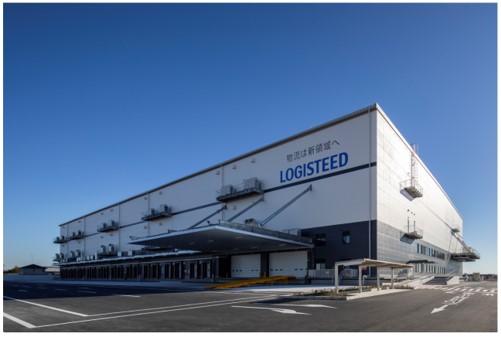
Area of medical DCs: About 270,000 square meters (as of March 31, 2023)
Of these, standard equipment for distribution centers that conform to GDP
|
*GDP (Good Distribution Practice): "Appropriate distribution standard for medical supply" to ensure strict quality control to prevent quality deterioration during transportation and storage.
GDP education program
| GDP promotion meeting (FY2022) | 11 times, 360 attendees in total |
|---|---|
| GDP video education (FY2022) | 8 times, 1,312 attendees in total |
The Group is promoting the implementation of automation and labor saving technologies at logistics sites, and introduction of equipment, in order to respond to social issues such as labor shortages, leading to a reduction in the burden on workers and establish a safe, secure and friendly workplace and a sustainable logistics management system.
|
Main equipment introduced in FY2022 Installed automated/labor-saving equipment, saving 100 FTE* per year compared to FY2021
|
*FTE (Full-Time Equivalent): A unit of the full-time work amount in an organization
We are working to improve operational productivity by temporarily storing piece shipment items put in trays in rotary piece sorters and automatically discharging them in delivery destinations units. We have been promoting the installation since FY2018, and this is currently installed at five sites.
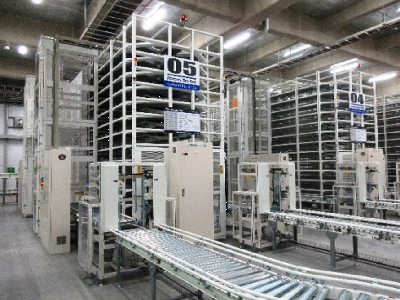
Medical DC (A)
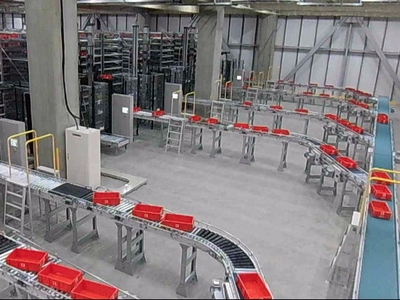
Apparel DC (B)
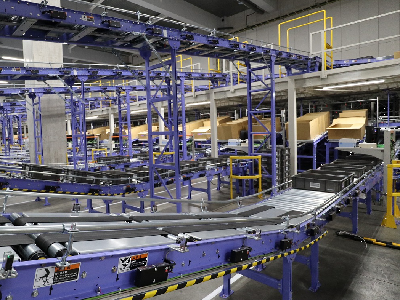
Apparel DC (C)
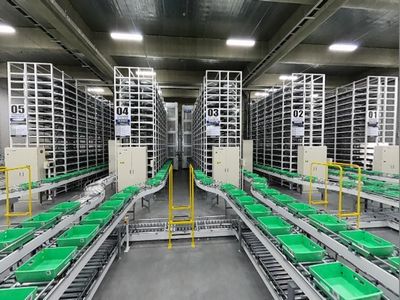
Apparel DC (D)
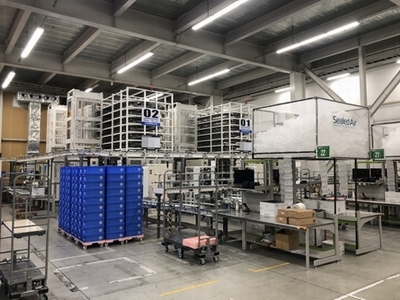
Medical DC (E)
Interoperability with mobile pallet racks, vertical conveyors, and automated warehouses to automate pallet cargo handling (warehousing/shipping) and transportation, including at night. We have been promoting the installation since FY2018, and this is currently installed at three sites.
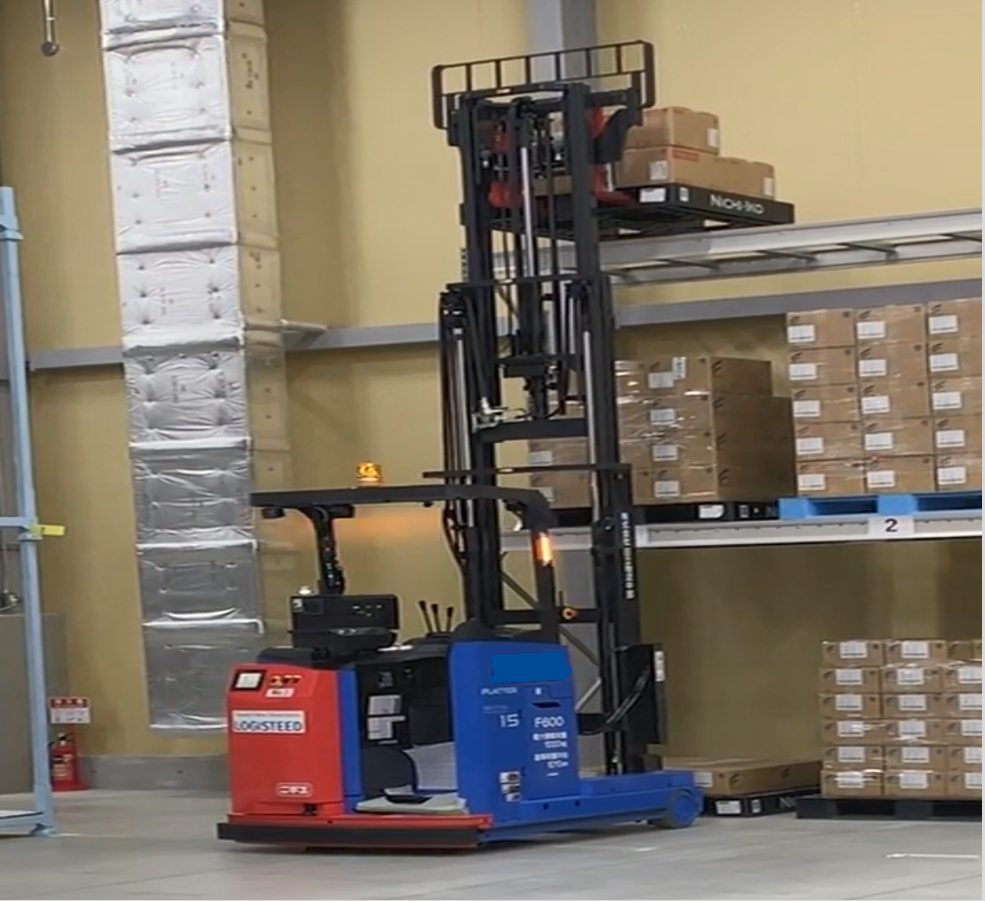
Medical DC (E)
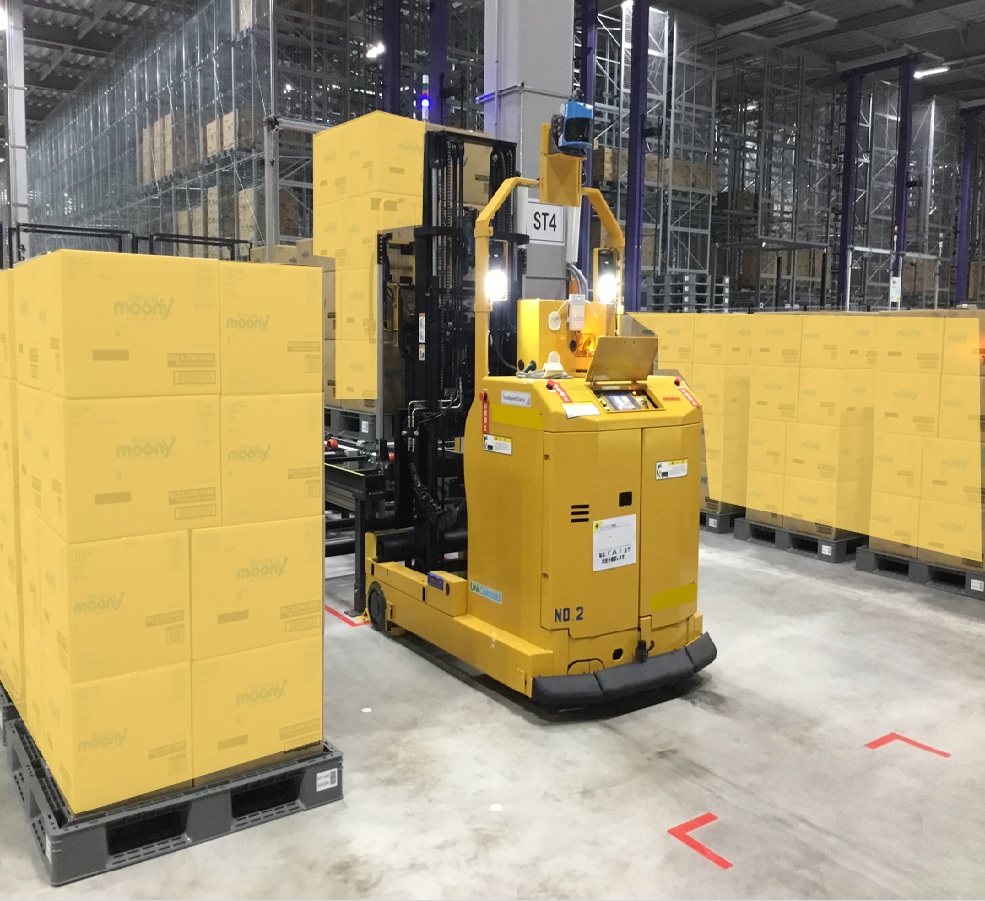
Daily Commodities DC (F)
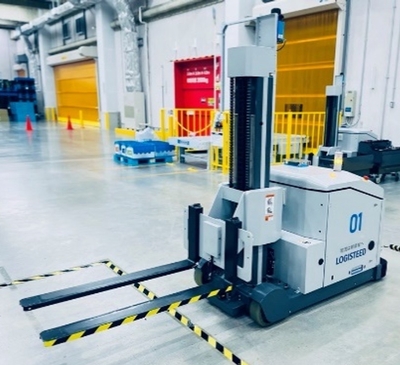
Medical DC (G)
Promoting labor saving in simple work by replacing the manual picking and placing process with piece picking robots with specifications according to the product characteristics. We have been promoting the installation since FY2019, and this is currently introduced at three sites.
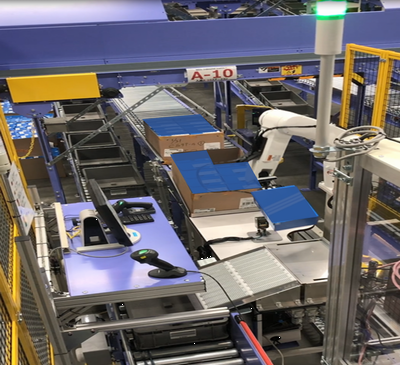
Apparel DC (C)
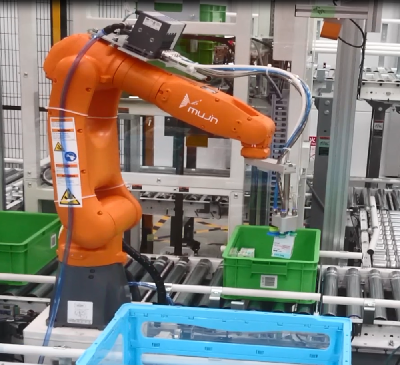
Medical DC (A)
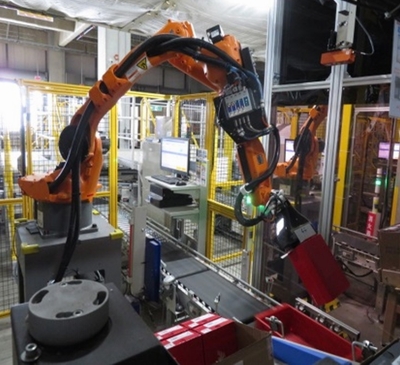
Apparel DC (B)
Depalletizers and palletizers are used with products shipped by the case for loading and unloading between pallets and conveyor lines and for stacking products from conveyor lines onto cage carts, thereby reducing the amount of heavy-lifting work and achieving labor-saving operations. We have been promoting their introduction since FY2019, and they are currently introduced at nine sites.
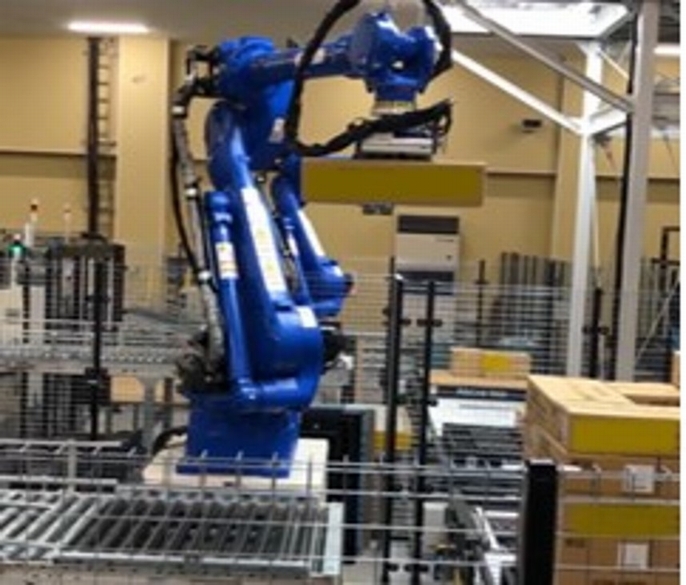
Medical DC (E)
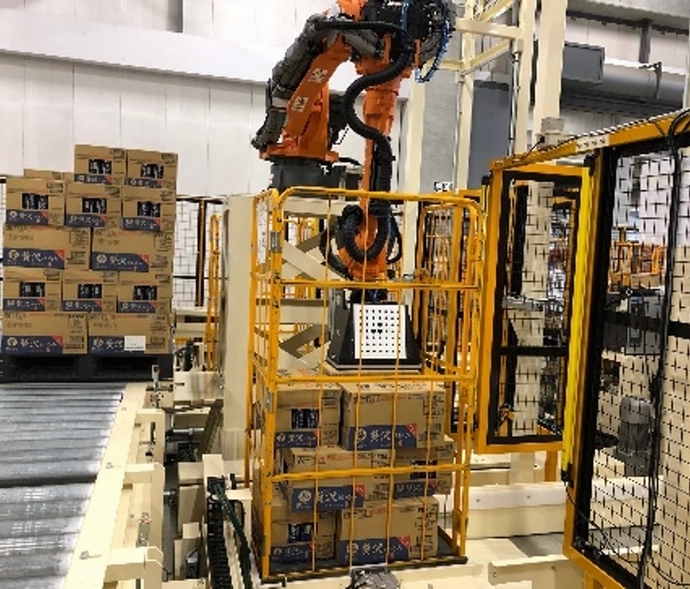
Distribution DC (H)
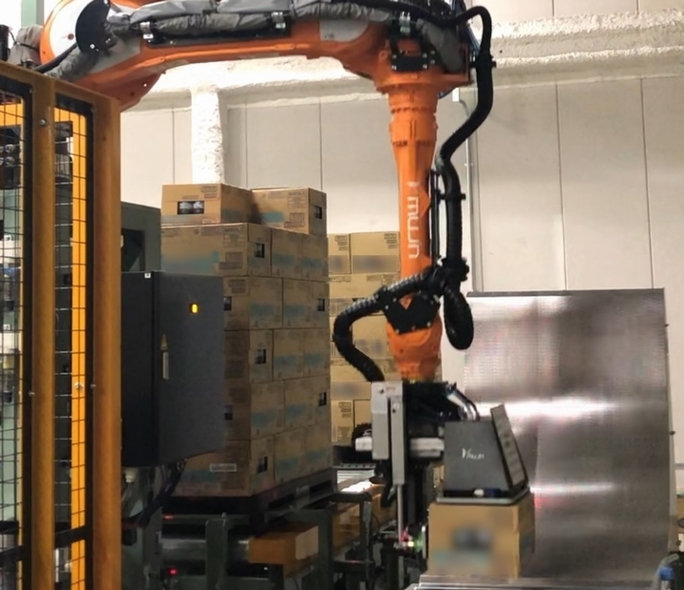
Distribution DC (I)
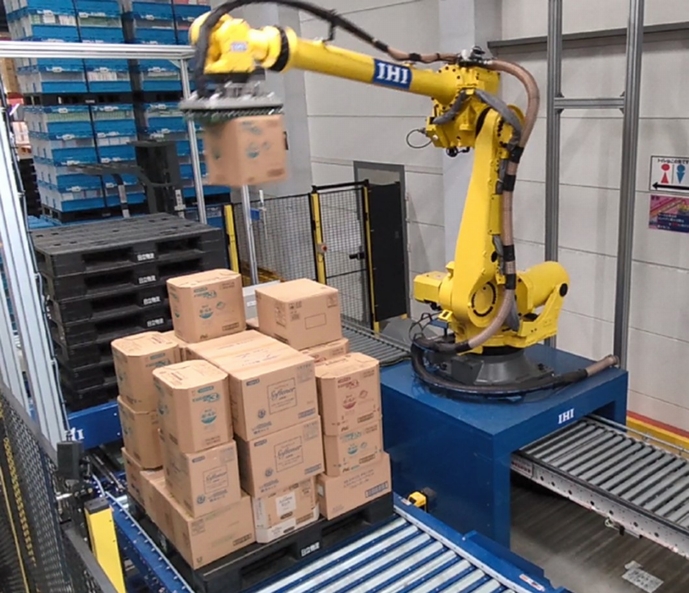
Distribution DC (J)
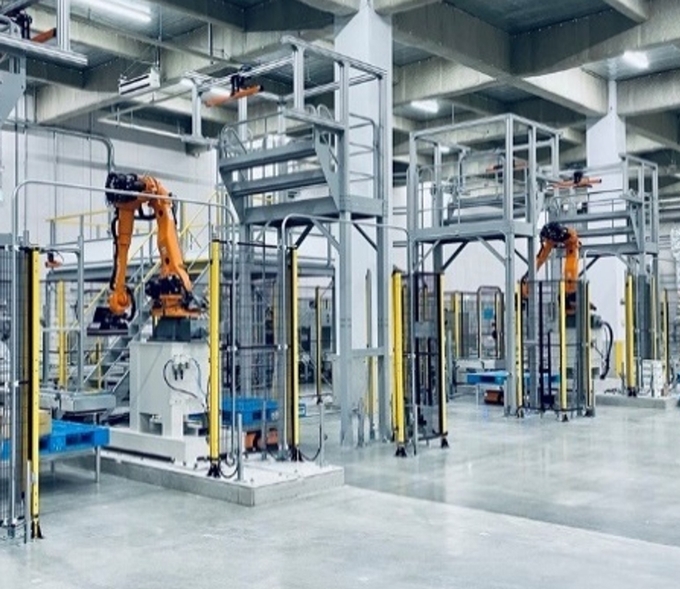
Medical DC (G)
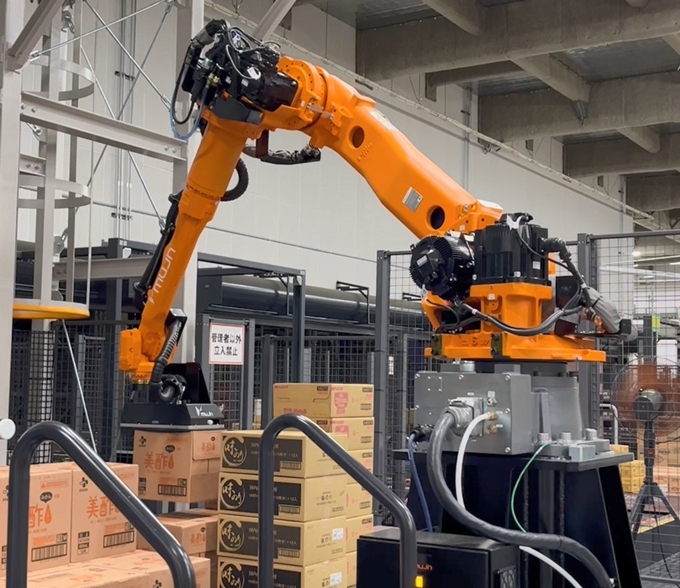
Distribution DC (K)
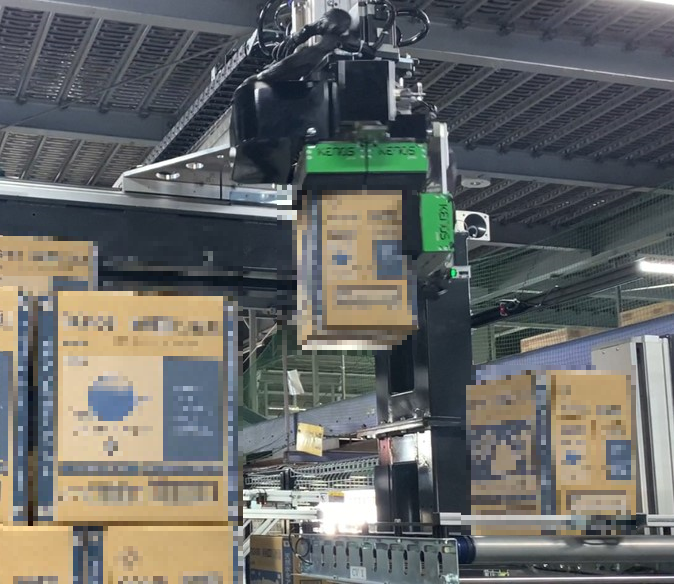
Distribution DC (L)
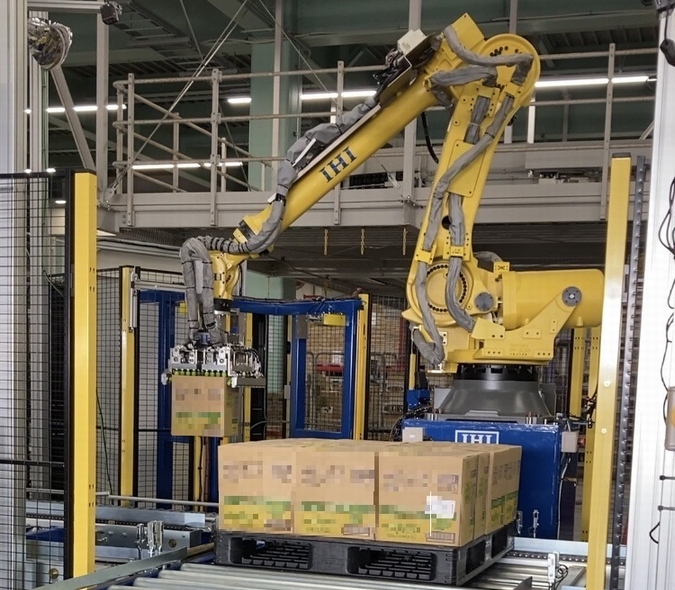
Distribution DC (Q)
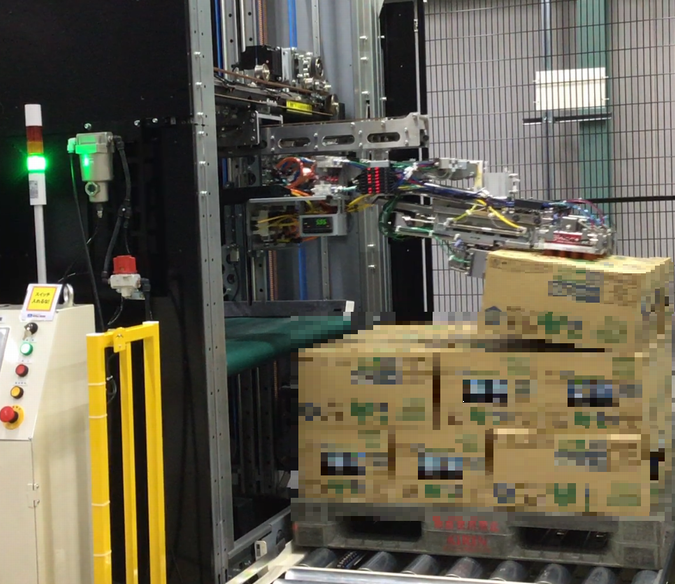
Distribution DC (R)
In addition to pallet transport and the like, these are utilized as shelf transport type picking and sorting systems for small goods to promote labor-saving in transport and picking/sorting operations. We have been promoting the introduction since FY2014, and these are currently introduced at six sites.
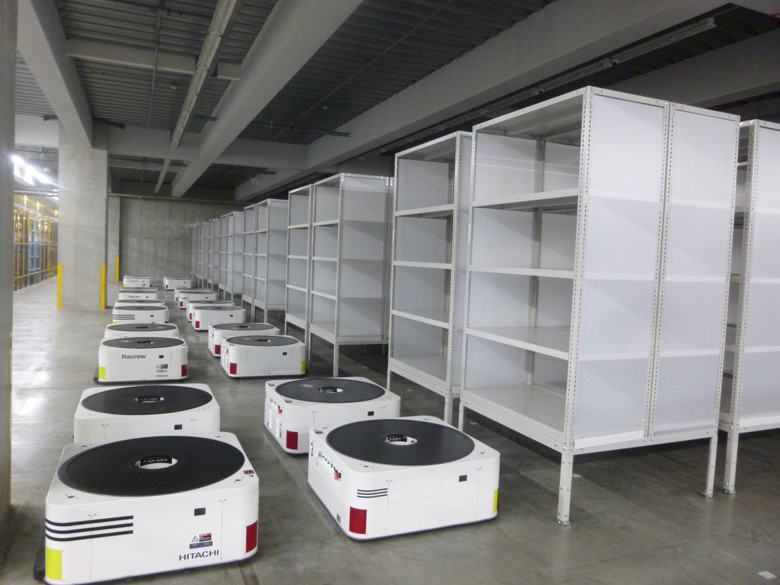
Apparel DC (C)
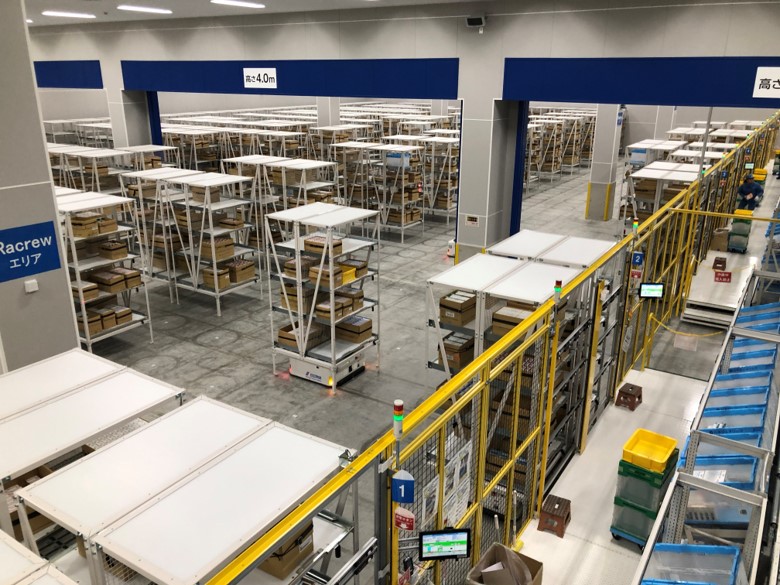
Medical DC (M)
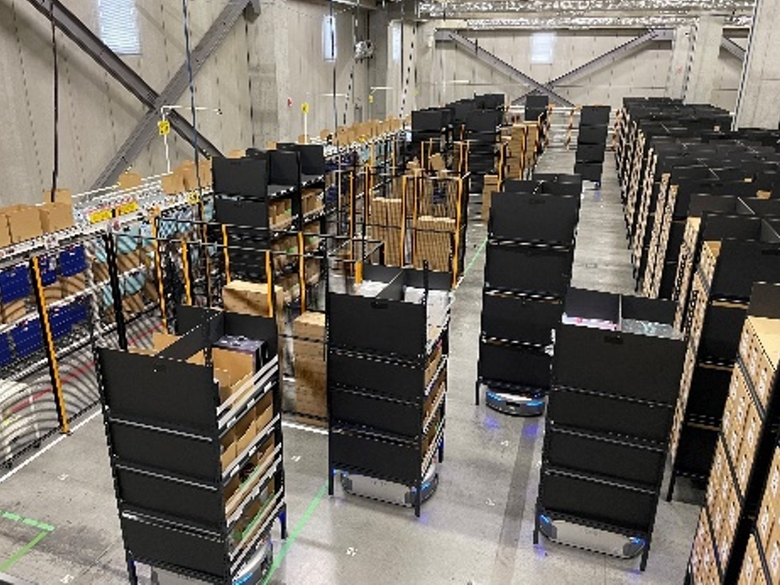
Shopping DC (N)
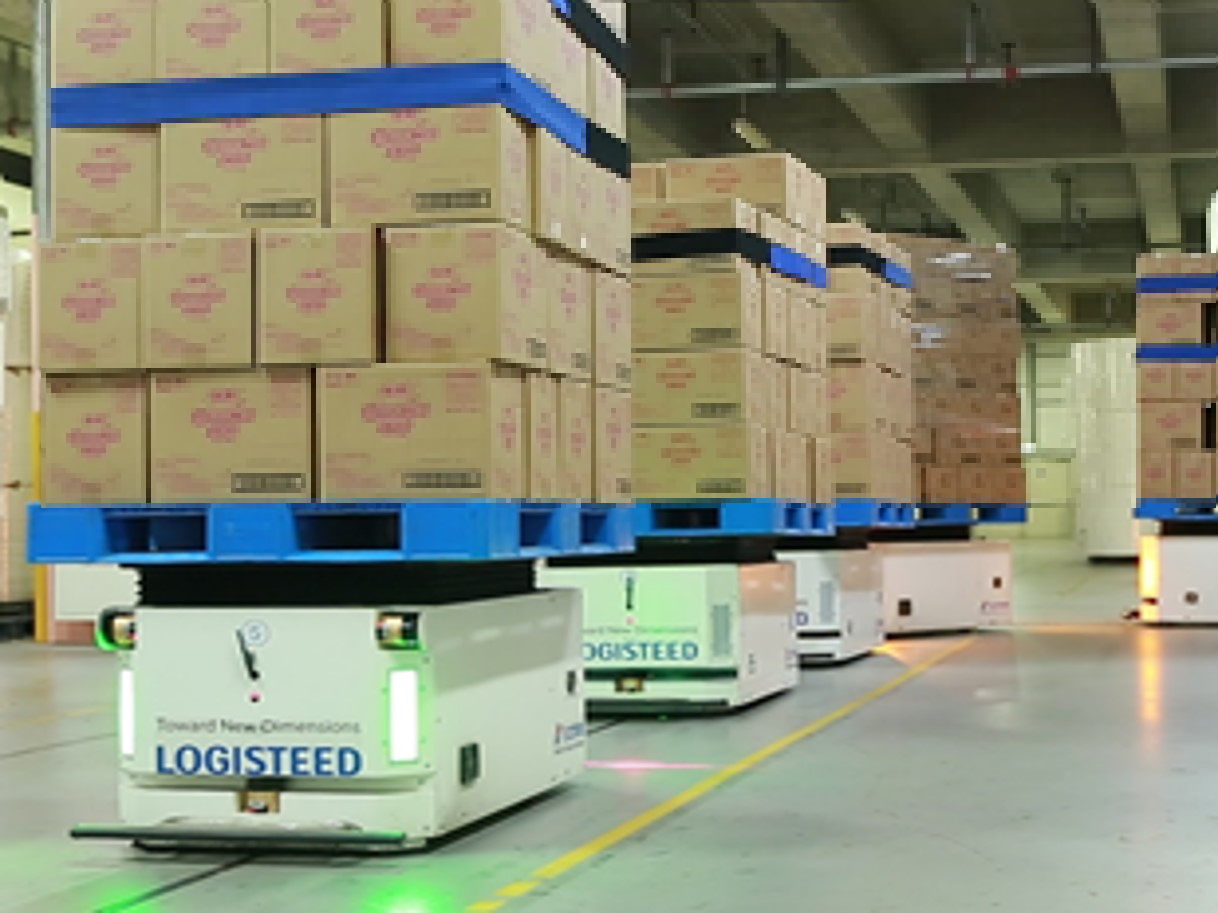
Daily Commodities DC (O)
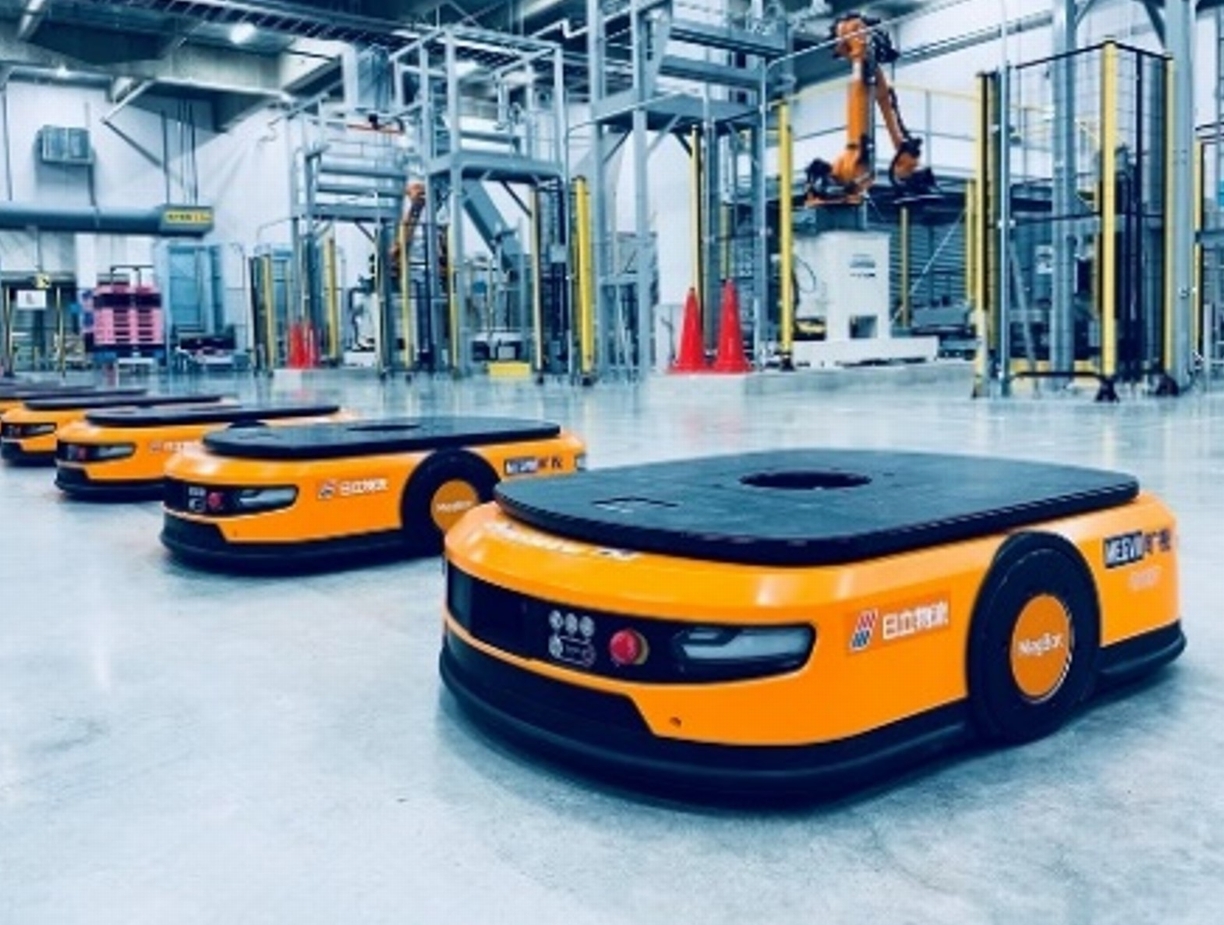
Medical DC (G)
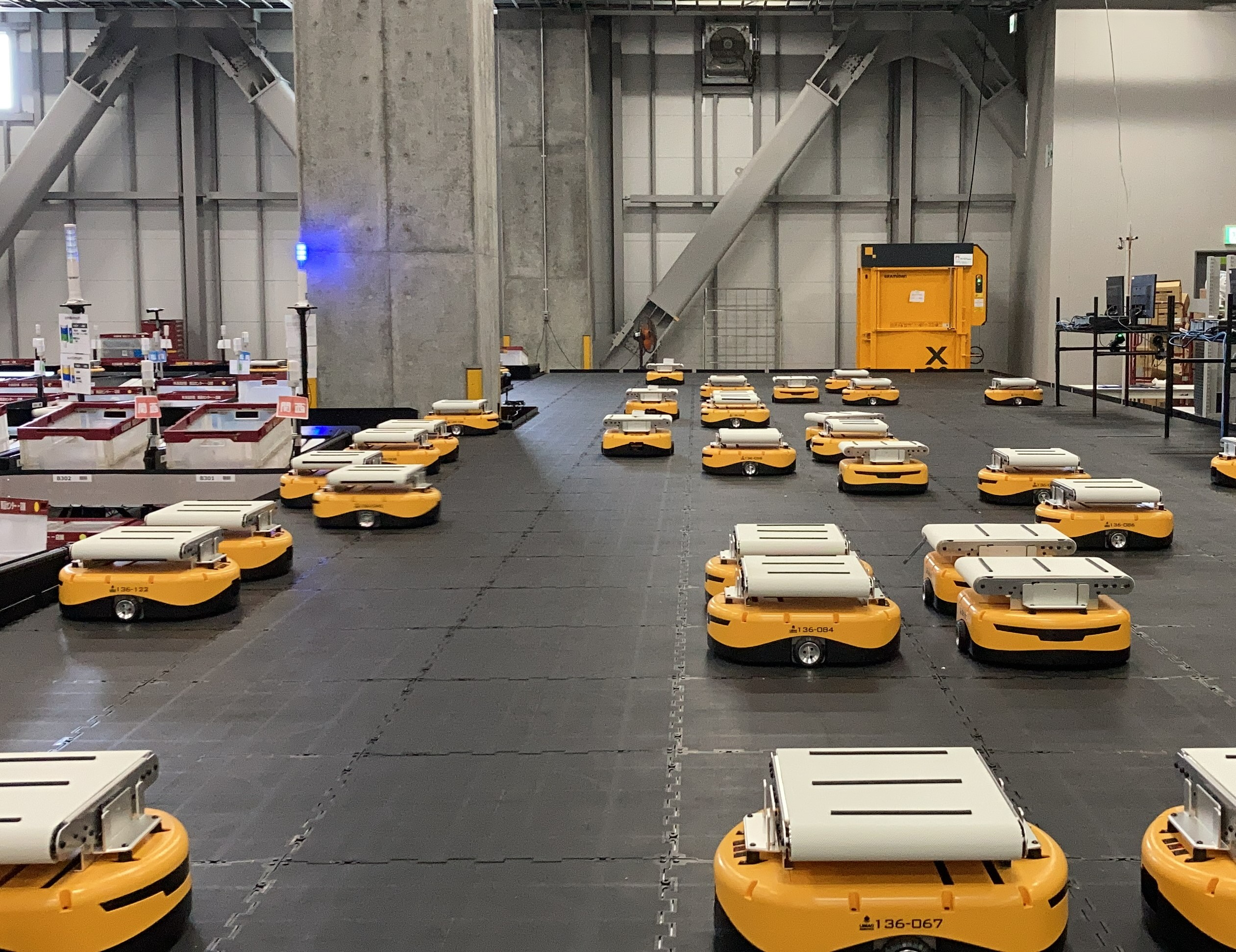
Distribution DC (R)
Utilizing picking assistant type AMRs in picking operations for small goods within warehouses reduces the distance walked by workers, leading to an increase in productivity. We have proceeded to implement these since FY2022, and have currently installed them in one business site.
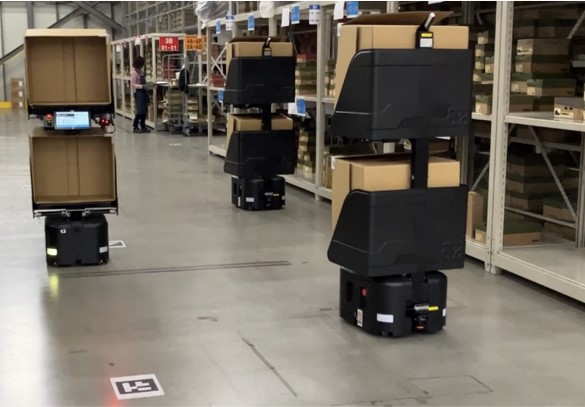
Apparel DC (S)
As aiming for the achievement of carbon neutrality by 2050 has become a global trend, there has been heightened attention on renewable energy. Among this, wind power is increasing in size due to estimates that power generation costs can be curbed by generating power at a large scale. In particular, it is expected that there will be an increase in demand for offshore wind power because it is easier to scale up than onshore, and it is forecast that there will be cases where larger equipment cannot be handled in transportation by existing heavy-lift ships.
Barges*1 are essential for the marine transportation of ultra-heavy equipment, and advanced specialized transportation technology is required for transportation. The Group owned the "Sunrise" self-propelled barge in the past, and has experience and accomplishments working on the marine transportation of various heavy objects. Due to this we have been involved in using barges for marine transportation of large equipment such as plant modules in Japan and overseas since letting go of the vessel. In FY2022, we utilized the technological capabilities and experience we have accumulated over the years to complete the transportation of monopiles*2 that are the foundations for offshore wind power facilities from China to Japan (Ishikawa Prefecture).
We will contribute to a sustainable society by supporting customers' business activities and the spread of renewable energy through the provision of integrated solutions for the safe and reliable delivery of important products.
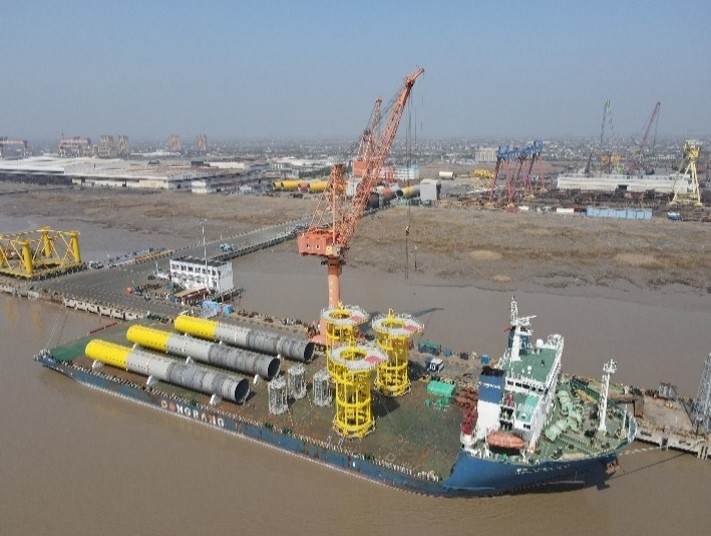
*1 A vessel with a hull that is shallow and flat, which is used for the marine transportation of heavy objects
*2 The foundation used as a support by driving the turbine pile into the supporting ground
"SSCV" is a transport digital platform that updates transport business through technology and open collaborative creation, and it consists of the following three solutions.
"SSCV" will build new business models contributing to the resolution of various social issues with services from ideas originating at the worksite that only a logistics company can provide and the utilization of big data obtained from services, connecting transport and society for a better future and contributing to the realization of a sustainable society.
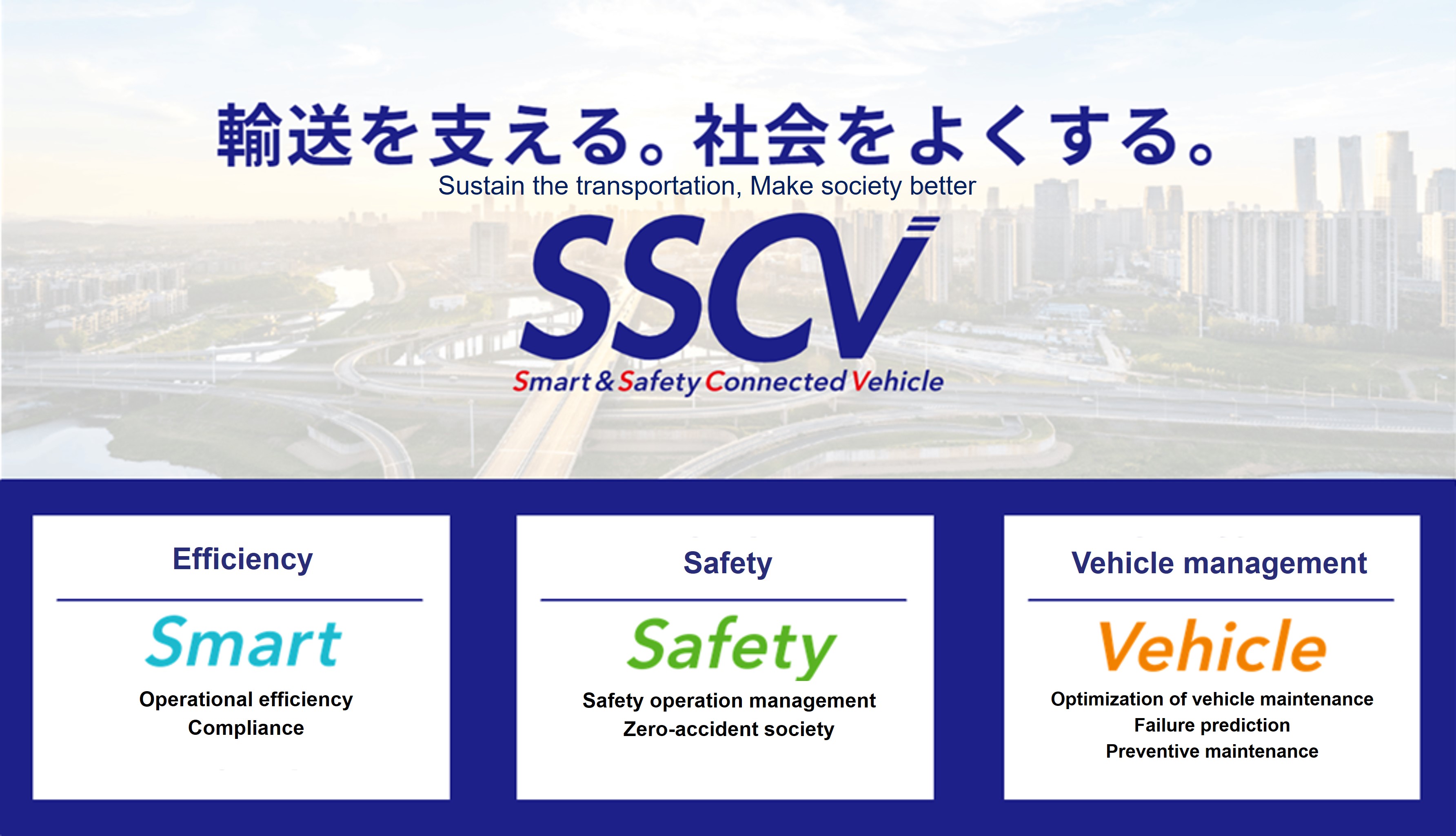
"SSCV-Safety" is a solution with which we aim for "zero accidents," developed as a result of our long-standing commitment to accident prevention and safety as a logistics company. The health status measurement function for drivers and the dashboard function for managers work in tandem to detect in real time near-misses that could lead to accidents.
In FY2022, we implemented expansions of the "Near Miss Map," the "Digital Call Ledger" and "Digital Routine Inspections" as functions for guarding the safety of drivers.
In future, we will engage in the expansion of functions for the purpose of strengthening compliance and improving efficiency of driving management operations as a response to the "2024 issue" in logistics.
| Status | Functions | Features | |
|---|---|---|---|
| Before driving | Predict | ・ Comprehensive health condition assessment ・ Near-miss forecasting |
Driver "fatigue" and "stress" that can lead to distracted driving are visualized, accident risk is predicted in advance using a unique algorithm. |
| While driving | Watch over | ・ Dangerous driving alert ・ Emergency information notification ・ Vehicle location and fatigue level monitoring ・ Danger detection by IoT button |
Dangerous situations (driving, fatigue level) are detected and drivers are notified on the spot, and managers can monitor the situation to catch near-misses in real time, rather than after the fact. |
| After driving | Review | ・ Operation route ・ Dangerous driving videos ・ Driving evaluation comment input |
Risk of accidents, which was previously determined by experience and intuition, is predicted and environment where drivers can be trained and evaluated based on facts and data is provided, thereby supporting the creation of a system to prevent accidents before they occur. |
In FY2019, we began full-scale introduction of "SSCV-Safety" to domestic commercial trucks and personal vehicles, and by FY2021 the system has been installed on all of the company's approximately 2,200 vehicles. Since introducing the system, we have maintained zero vehicle accidents caused by distracted driving, thereby minimizing the occurrence of accidents. Starting in 2021, we have been offering the service to other transport companies outside the Group, and we are working to further spread the use of "SSCV-Safety".
"SSCV-Safety" is certified as "TDBC Certified Solution" by Transportation Digital Business Conference (TDBC) and is used in initiatives to solve social issues such as research projects by the Ministry of Health, Labour and Welfare and verification experiments by the Ministry of Land, Infrastructure, Transport and Tourism.
Number of vehicles installed with SSCV-Safety (as of March 31, 2023: cumulative)
| Type | No. of vehicles |
|---|---|
| Our group companies | 2,299 |
| Partner companies | 220 |
| External transport operators | 111 |
| Total | 2,630 |
The truck transport industry is made up mostly of small and medium-sized businesses, and many of them still conduct operations using telephone, fax machine, and paper documents. "SSCV-Smart", developed by us, is a transport operations support solution for cargo owners and transporters that contributes to improvement of operational efficiency and strengthening of compliance on both sides.
"SSCV-Smart" is an online system that connects cargo owners and transporters via the Internet. It contributes to business efficiency and profit improvement, as the system allows for centralized management of all processes from acquiring transportation projects to vehicle assignment, issuing driving instructions, and billing, in addition to supporting saving of electronic books and the invoice system.
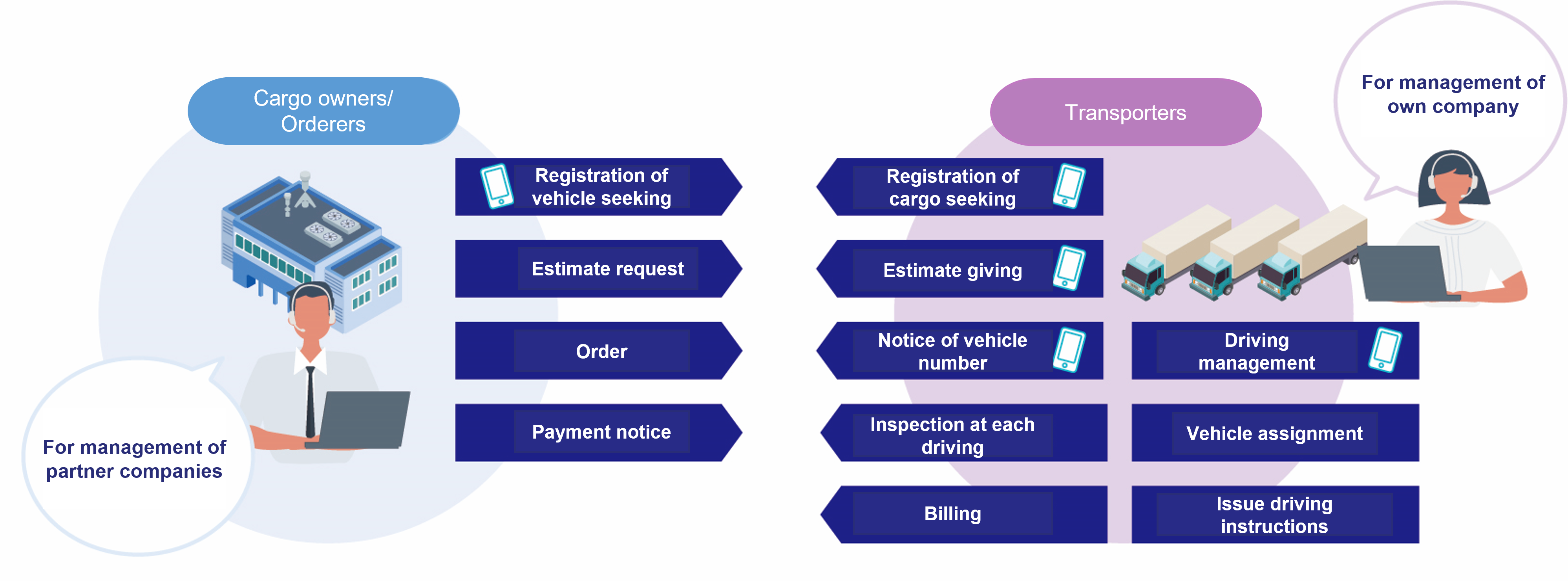
Installation of SSCV-Smart (as of March 31, 2023: cumulative)
| No. of companies that installed SSCV-Smart | 137 |
|---|
Vehicle management is complicated and involves a wide range of tasks such as inspection, maintenance, and insurance renewal. In addition, compliance with laws and regulations is required, and inadequate management can lead to major risks. "SSCV-Vehicle" is a new solution for vehicle management that combines the unique perspective of a logistics company with technology.
"SSCV-Vehicle" centralizes and supports the individual management operations from vehicle procurement to purchase. Currently, we are developing preventive diagnosis functions, such as remote diagnosis and failure prediction alerts utilizing IoT technology and big data.

Installation of SSCV-Vehicle (as of March 31, 2023: cumulative)
| No. of vehicles installed with SSCV-Vehicle* | 3,149 |
|---|
*The total number of trucks, business vehicles and forklifts owned by group companies in Japan that have introduced SSCV₋Vehicle
As the modern supply chains are becoming more complicated and sophisticated, we will work together with our customers, as a strategic supply chain partner, to contribute to increasing their business values and improving their environmental value such as decarbonization through the visualization and total optimization by DX.
In FY2022, we began development and service provision of a "coordination type inventory control support service" that shares inventory information with suppliers and "SCLINK+" which centrally manages information between processes in trade operations on a cloud-based platform, and we made SCDOS related proposals to more customers than we originally planned.
In overseas, LOGISTEED Malaysia Sdn. Bhd. and PT LOGISTEED Indonesia, our group companies, will install the standard monitoring that integrates three visualization solutions of warehousing, transportation, and CO2 emissions in collaboration with "ONEsLOGI" lineup of LOGISTEED Solutions, Ltd.
*ONEsLOGI : A WMS (Warehouse Management System) solution supporting the Group's 3PL
Maintaining appropriate inventories helps companies reduce wasteful storage costs, maintain product quality, and ensure a stable supply of products, but timely inventory resupply decisions are essential to achieving this goal. We aim to contribute to customers' logistics optimization by supporting the execution of inventory replenishment orders through inventory analysis and evaluation using a wide range of data generated in the logistics process along with forecasting technology. In FY2022, we started providing this to customers as an actual service based on the results of verification in actual logistics work sites until now.
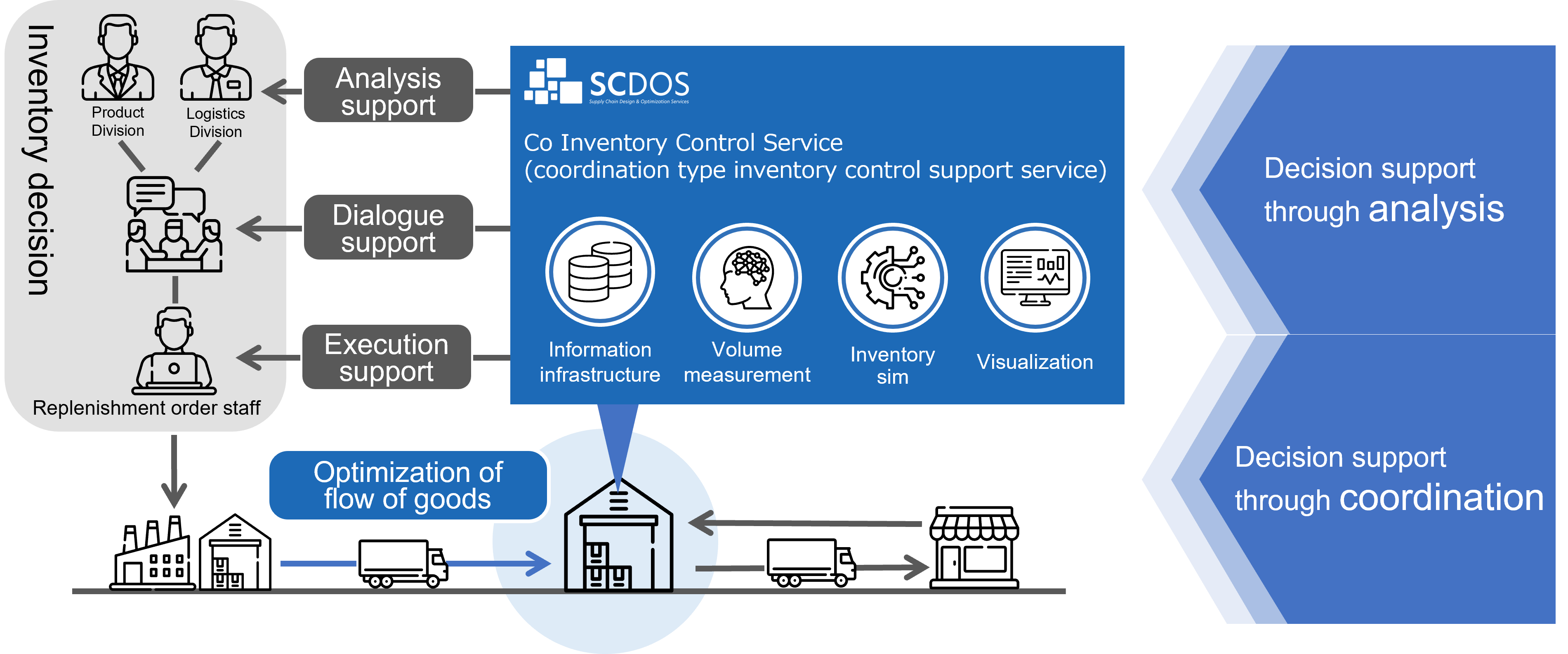
Utilizing knowledge obtained in logistics operations to date and AI-based high-precision predictive technology, we are proceeding with the development of the SDF (Smart Demand Forecast) tool and expansion of functions enabling forecasting of future excesses and shortfalls of goods volume and workers. In FY2022, we linked WSCDOS_Co Inventory Control Service to implement functions enabling predictive operations. This enables us to ascertain forecast goods volume taking into account seasonally busy days and future sales, and is also expected to support drafting of plans for new business sites several years ahead.
Utilization image
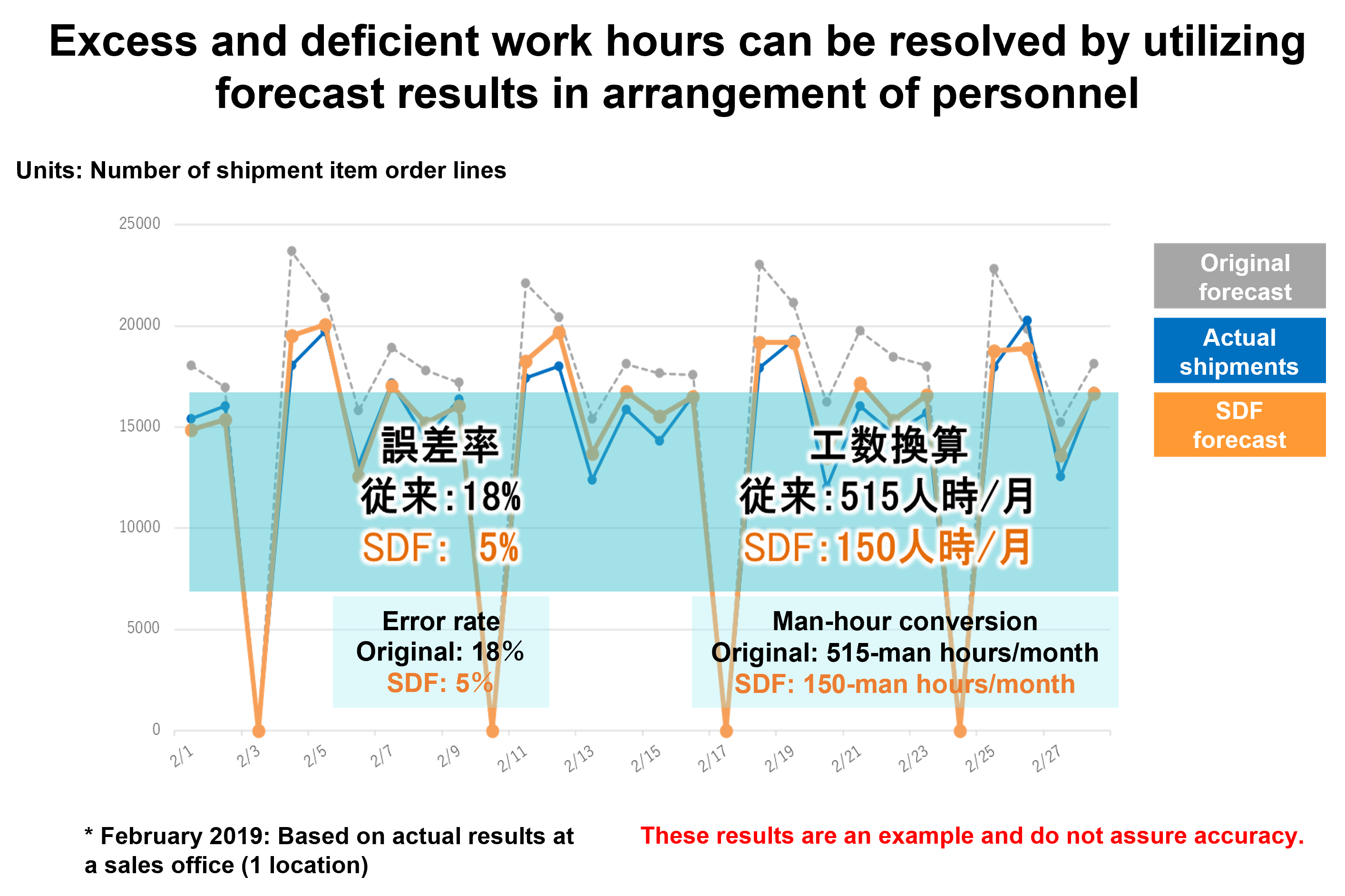
Many customers have felt the limitations of improving efficiency through data tracking using spreadsheet software in import procurement operations. In this context, the Company has started providing "SCLINK+" for improving the efficiency of operations though platform-based management of data previously managed separately. Introducing this platform will visualize the number of orders and transportation status, enabling the reduction of manhours spent on inquires among the players in the supply chain and accurate responses on delivery time, leading to improvement of efficiency of operations.
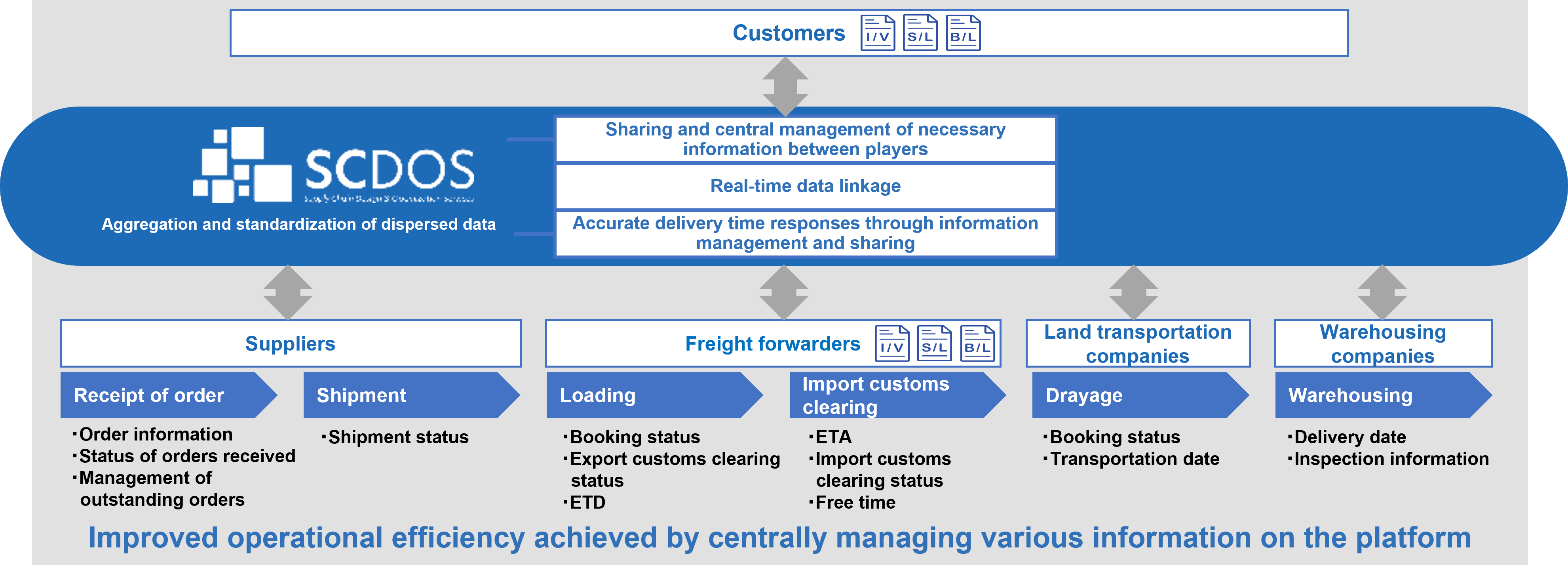
As part of "SCDOS," our DX service to support optimization of customers' supply chain, we offer "CO2 emission visualization function" from FY2021. This service enables customers to accurately measure and visualize CO2 emissions and reduction in the supply chain by centrally managing and monitoring their various data, which has received conformity assessment by a third-party organization. In FY2022, we made more proposals than we originally planned and supported the visualization and reduction of CO2 emissions from logistics domains of multiple customers.
The Group is promoting DX by accelerating the digitalization, visualization and standardization of a variety of data arising in logistics sites, as labor shortages and long working hours become issues in the logistics industry.
To create new values and innovation by promoting DX, we are working to develop and establish a company-wide digital platform for both business and management systems. We completed renewal of the core management system for domestic group companies in FY2022, enabling us to provide innovative digital services and promote data-driven management through linkage of the digital management platform and the digital business platform.
We are engaged in the transformation of logistics services through the utilization of digital business infrastructure to increase efficiency of business operations and improve productivity through DX. Digital business infrastructure is a digital platform for realizing logistics DX, and aggregates and standardizes a variety of digital data obtained day to day in the warehousing domain in the Group. Utilizing this digital business infrastructure, by FY2022, we completed over "60 logistics transformation projects" that was the target for FY2024.
The Group is actively engaged in not only the promotion of labor saving in logistics centers, but also in improving efficiency and standardizing warehouse operations through DX to resolve social issues such as logistics delays/stagnation and rising logistics costs caused by labor shortages.
The Group has actively installed digital equipment such as automated equipment and smart devices into work areas in warehouses and has achieved further labor saving and standardization through integrated control with RCS. In FY2022, we installed RCS to five warehouse projects and successfully improved the efficiency of and standardized human resources adjustment and control by, for example, automatically creating tasks which used to be dependent on managers' insight such as staff assignment, shift planning, and work process planning in the warehouse, as well as reflecting them in devices ownedby managers and workers.
※RCS (Resource Control System):An integrated control system equipped with a work execution function that gives instructions to each equipment and worker based on the information on the operation status of the automated equipment and the work results of workers within the logistics center
Implementing RCS in the household goods logistics center (Ibaraki-shi, Osaka) opened in FY2022 has enabled us to perform integrated control of automated facilities reflecting the Company's proprietary warehouse operation knowhow, and we have achieved efficient automation and labor saving in work processes from the receipt of products in single and case packing modes to sorting by destination. Furthermore, the implementation of RCS has enabled swift processing of warehouse operations such as personnel assignment planning, shift planning and work process planning in warehouses that had previously relied on the knowledge of managers. The implementation of the DX solution called RCS has resulted in real-time budget and results management of facilities and personnel and the improvement of efficiency and standardization of resource control.
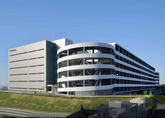

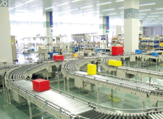
We are working to standardize Warehouse Management System (WMS) to expand value we provide to our customers. We used to customize WMS by business type or customer. Now, in order to expedite and sophisticate our proposals on and provision of services to customers, we have reconstructed "ONEsLOGI, a new WMS-PF (standardized warehouse management system)" equipped with the Group's expertise on the warehouse domain as well as those acquired through the 3PL business over the years and all logistics-related functions as a standard solution. We monitor and manage the progress of the expansion of functions of this solution as a conformance rate and achieved 75% in FY2022 as planned.
| Conformance rate of ONEsLOGI new WMS-Platform to logistics operations(FY2022) | Target | Result |
|---|---|---|
| 75% | 75% |
We generally file patent applications for technologies and expertise that are important management resources to promote collaboration and innovation as business-related inventions, and most of such applications in recent years are DX-related. We will capture and visualize technologies and expertise as intangible assets to further create and utilize values.
| Ratio of DX-related patent applications to total applications (as of March,31 2023, cumulative) | 30 cases |
|---|---|
| 96% |
In addition to enhancing DX training to secure DX personnel to handle the creation of new businesses utilizing IT and DX, we are developing data scientists for discovering and resolving customers' supply chain issues based on data.
| Number of attendees of data scientist training course (as of March 31, 2023, cumulative) | 108 |
|---|
"Recovice" developed to respond to consumption styles changing from ownership to use and experience is a service supporting subscription services of e-commerce operators through individual item management using RFID* tags and a cloud-based system.
As the fashion industry faces environmental issues such as mass consumption and disposal of apparel, this "Recovice" not only contributes to the realization of cyclical logistics supporting sharing, subscription and rental services, but also leads to "extension of product life" and circular economy through appropriate cargo handling.
*RFID (Radio Frequency Identification): Contactless automatic recognition technology that reads information via radio waves
We are seeking effective ways to use big data obtained from SSCV services and its new value in order to realize "smart and safe logistics." In FY2022, we participated in "Daiwa House Industry Open Data Challenge for Smart Logistics" sponsored by DAIWA HOUSE INDUSTRY CO., LTD., our collaborative innovation partner, and made data obtained from SSCV-Safety publicly available to invite ideas on new digital services and applications using such data from the public at large. Going forward, we will continue to utilize data obtained from SSCV to create new businesses and solve social issues through collaborative innovation with partners beyond the industry.
Our Service Portfolio